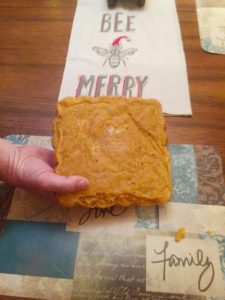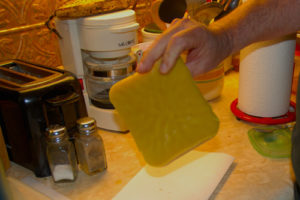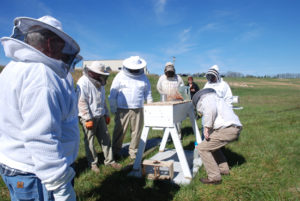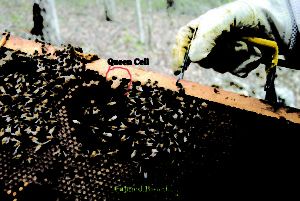It’s Time to Make Splits
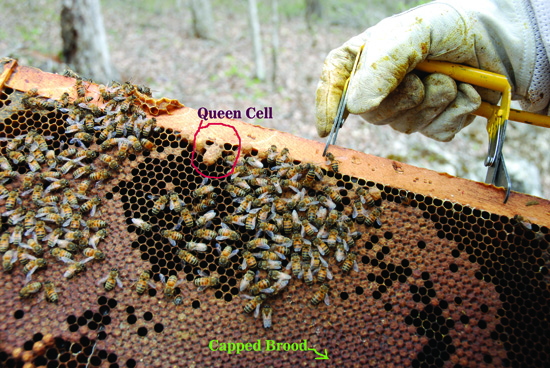
In this photo we wanted to show you what capped brood looks like and how a new queen cell is developed, it takes a new queen 17 days to emerge from her cell. (Photo by Chris Erwin)
BY Chris Erwin
There used to be a time when you could buy a couple of Nucs or packages of bees, and they would last for years. Those days have come and went. In today’s world, we have so many things that kill bees a new way of bee management is necessary if you want to be a beekeeper and not buy bees over and over.
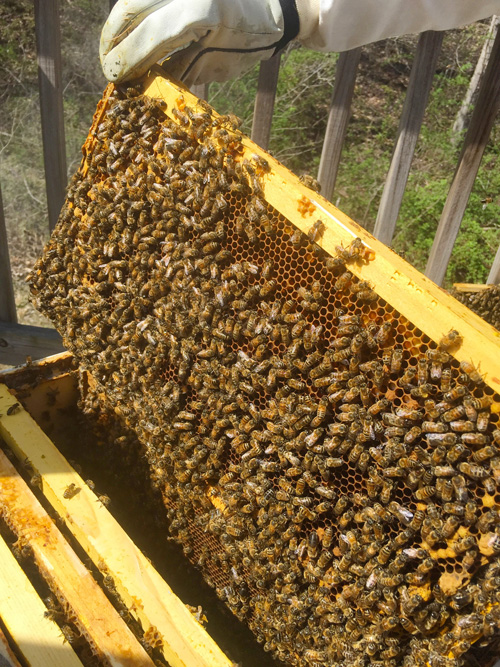
Today we are dealing with Varroa mites, Colony Collapse Disorder, nosema, pesticides, and climate change. That’s only a few things that increase mortality in bee colonies. This past year many of us believe that the erratic weather patterns killed more bee colonies than we have seen in a long time.
Bees have survived in frigid temperatures; it’s not the cold that hurt so much this year. Many hives died in February when we start getting 60 degree days and 12 degree nights coupled with rain. It triggers things that divide the bees. The 60 degree days can signal a queen to start laying. Once she starts depositing eggs in the spring, the eggs must be kept in the 93-degree range to hatch; this is done by the workers incubating them. When it gets cold the bees cluster together to generate heat, just like us huddling together. However, once they have young, they are genetically triggered to keep the brood warm dividing their resources and in many cases causing them to freeze to death.
The new management techniques to improve your ability to overcome losses are simple; you must learn when and how to make splits. You want to figure you are going to lose at least 25% of your hives each year. If you do this, you can bank Nucs and queens to make up for your losses.

This is the time of year to think about doing your splits. The early spring build-up can help you in a few ways. The key here is timing. If you do your splits at the right time, you should be able to double your hives and help prevent swarming while not overly impacting honey production.
The last bee article, we talked about spring inspections, if you are keeping track of the growth of your hives you should know what colonies are growing fast and the ones that need more time. When we talk about splits, we want to see good patterns of capped brood in both deep brood boxes. In some hives, you can do two splits from one hive.
Let’s define just what I’m calling a split; they are no hard fast rules; however, I am giving you examples that have worked for me. I also want to say, I don’t do “walk away splits.” They are slow with spotty results, and you are hoping they make a new queen. I buy or make my own mated queens for the number of splits I plan to do.
Each split gets three frames of capped brood, one frame that has both honey and stored pollen, and one frame with the new foundation. I replace the frames in the original hive with new ones, and I checkerboard them in the brood box. A hive during this spring build-up should have five to eight frames of brood in each box so the splits should not adversely affect the progress of the colony during this period.
I put the splits in five frame Nuc boxes. I wait 24 hours and introduce newly mated queens in each using the queen cage release method where they must eat through a sugar cake to release her, giving them time to accept her. If after three to four days she hasn’t been released, I usually finish breaking through the sugar cake and let her escape. If all goes well, they should start drawing out comb on the empty frame, and once the new queen starts laying on it, you are about ready to move the new colony into a 10 frame box, where it will become a new complete hive.
